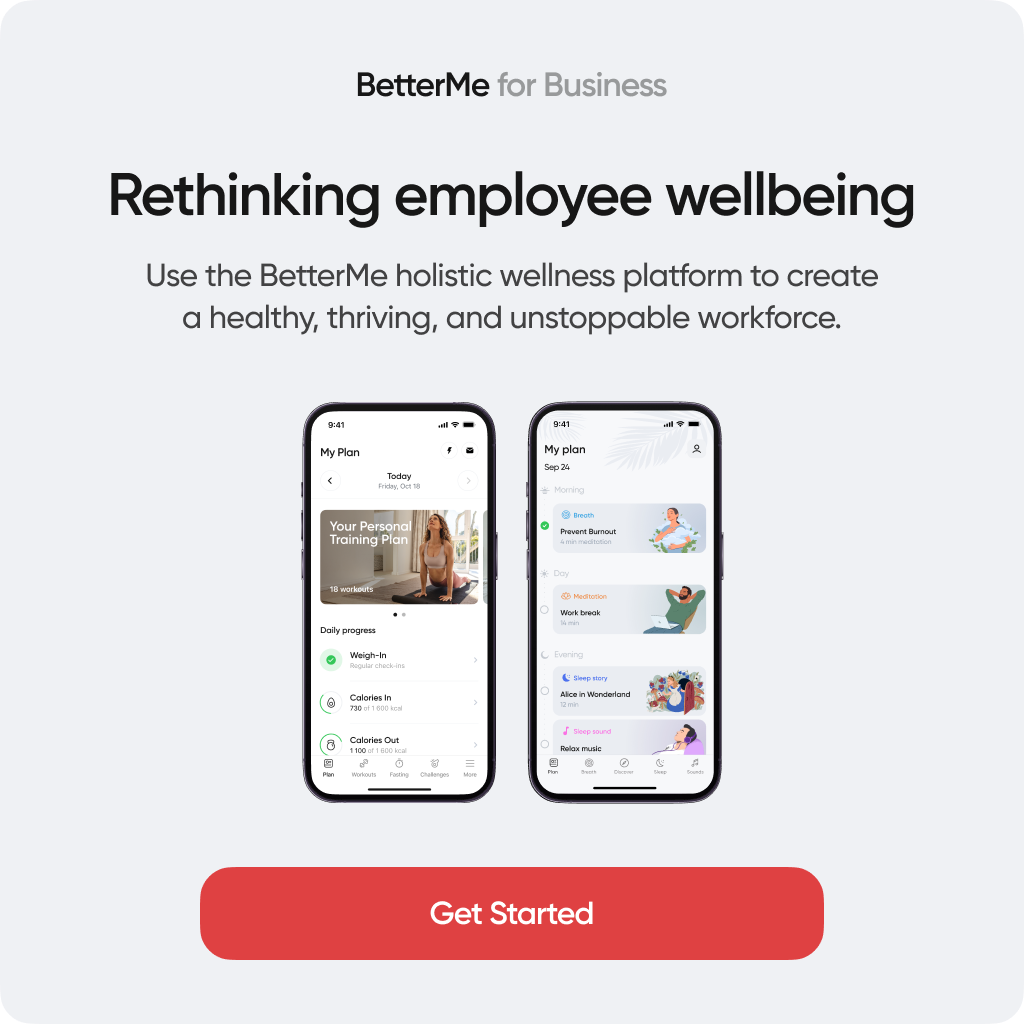Providing benefits for small business employees might seem like a big investment, but it can be a lucrative addition that is likely to pay off in the long run. Employee benefits for small businesses not only help to incentivize existing and potential employees but should also translate into lower taxation for the overall business. Today, a variety of unique employee benefits packages exist in the market, allowing you to customize a plan that can best suit your company. Conventional employee benefits packages include a range of healthcare benefits for small business employees like dental and vision plans, life insurance, and disability insurance; and savings and financial benefits like Flexible Spending Accounts (FSA), paid time off, and Employee Assistance Programs (EAPs) among others. Forward-thinking employee benefits packages would reflect the recent trends in corporate culture which look towards flexible timings, remote working options, and wellness plans like discounted gym memberships, on-site exercise classes, access to therapists, and healthy meals.
What Are Examples Of Employee Benefits For Small Companies?
Employee benefits for small companies are a set of programs offered to employees above their regular salaries or hourly wages. While some employee benefits packages are mandatory to provide to your workforce and depend on factors like size, preference, and overall goals, there are also a wide variety of unique benefits packages that can be included based on need.
Providing company benefits for employees is an integral part of a competitive compensation package and contributes to a positive work environment. A comprehensive benefits program demonstrates a company’s commitment to its employees’ well-being, resulting in higher employee morale and increased job satisfaction. In addition, benefits can serve as a strategic tool for attracting top talent and retaining valuable employees.
Offering the right benefits package for small business employees can not only enhance job satisfaction but can also increase productivity. In this article, we will explore the different employee benefits commonly offered by small businesses, highlight the key factors to consider when choosing the right employee benefits program and provide examples of companies with exceptional employee benefits. Whether you’re an HR professional or a small business owner, this guide will help you make informed decisions to provide the best benefits for your team.
Why Should Small Businesses Offer Employee Benefits?
Overwork, burnout, and a quest for purpose and values-driven work have set into motion a “great reshuffling”. More than 4.5 million people in the U.S. are leaving or changing jobs in November 2021 alone, reported in a study conducted by Boston College’s Centre for Work and Family (1). Many employees are now taking advantage of a plentiful labor market for skilled employees. They are moving to organizations that can offer a better fit with their values and work/life expectations.
This also translates into a boom in entrepreneurship and self-employment. In the post-pandemic world, the need for an attractive employee benefits package can be the game-changer that distinguishes a company from its competition. Newer needs of employees like the ability to work remotely and have a flexible routine have witnessed a massive increase in recent years, as reported in LinkedIn’s 2021 trend report (2). That said, why is it important to offer company benefits for employees?
Why You Should Offer Employee Benefits?
According to the 8th Annual Study on Employee Benefits by MetLife in 2009, employees perceive their workplace benefits as a means of establishing financial security (3). Although the primary motivation continued to be performing their assigned tasks accurately, achieving security came in at a close second. From the employee’s perspective, small business benefits packages can serve to incentivize employees’ performance and drive engagement; by providing programs such as protection against loss of income due to critical illnesses, disability, or premature death; protection against medical expenses; retirement income and savings; offer opportunities for capital accumulation; sound retirement, financial and tax planning programs and services to assist employee planning for a secure retirement (4).
Alternatively, from the employer’s perspective, the benefits a small business can offer employees are directly proportional to the retention and recruitment of top talents (5). Successful organizations have come to the realization that employee retention is an important aspect to sustain their leadership and growth in the marketplace (6). Providing benefits for small business employees can help achieve overall organizational goals (7). The cost of employee benefits for a small business is another important factor that can reduce the tax burden on its owners. A study in the United States found that of SMEs who did not offer health insurance benefits, 57% of them were unaware that they could get 100% tax deductions of their health insurance premiums (8). A small business benefits package for employees is the winning option for both parties.
According to research published by the U.S. Bureau of Labor Statistics, life insurance was available to 57% of private industry employees in March 2022. While wellness programs were available to 43% of private industry employees (8).
Read More: 5 Benefits Of Workplace Wellness Programs: A Content Employee Is Your Key To Success
What Benefits Do Most Small Businesses Offer?
The employee benefits for small companies are usually classified according to the mandatory benefits and those that companies can offer additionally. For the required company benefits for employees, staying compliant with the U.S. Department of Labor laws and Regulations becomes imperative. Failure to meet the norms can result in penalties, fines, and even legal notices, as well as foreclosure.
Ancillary benefits for small business employees can include protection programs such as medical insurance, paid time off, and services such as daycare assistance, along with voluntary monetary benefits for small business employees such as IRAs, 401(k) plans, and employee pension packages. Now let’s take a look at the best small business benefits packages that you can offer to your employees.
Mandatory Company Benefits For Employees
-
Social Security And Medicare
Social Security and Medicare are federal programs mandated for payment from U.S. employees through employer deductions during their period of work. For every small business employee, companies must withhold Federal Insurance Contributions Act (FICA) taxes of 1.45% for Medicare and 6.2% on the first $137,700 of earnings for Social Security. Employers must also contribute an equal share of the funds (9). Social Security benefits are meant to provide small business employees with a retirement or permanent disability income. On the other hand, Medicare would cover their health insurance once they turn 65 or are diagnosed with a certain medical condition or disability.
-
Employee’s Compensation
Employers and employees of small businesses have protection from litigation over work-related accidents and illnesses through this scheme. Although not mandatory by U.S. Federal Law, different states have different structures when it comes to employee’s compensation. Under this plan, the benefits for small business employees would include medical treatment, lost wages, rehabilitation care, disability costs, and funeral benefits for employees injured on the job. The state labor departments are responsible for the disbursement of these funds.
On average, employees’ compensation costs businesses $0.45 per hour or 1.3% of compensation (10). While the compensation laws differ with each state, it is essential to find out your state’s requirements. Understand that the rates depend on the type of work your employees perform, thereby creating an evolving structure. For example, for low-risk industries such as accounting, marketing, and others, you’ll pay less than an employer in a higher-risk industry, such as construction or mining.
-
Unemployment Insurance
Unemployment insurance provides small business employees with monetary compensation in order to supplement the termination of a job that occurred due to no fault of their own. Employers must also pay Federal Unemployment Tax Act (FUTA) taxes and state unemployment taxes. If an employee happens to leave your establishment and files an unemployment compensation claim, you’ll receive a notification. The funds will be deducted from your unemployment account. This amount is subject to the state you’re in and the guidelines for a base wage multiplied by a tax percentage. In Alaska, New Jersey, and Pennsylvania, small business employers must also withhold employee taxes for this scheme. The Unemployment Insurance taxes cost employers $0.17 per employee hour (11).
-
Overtime Pay
Under the Fair Labor Standards Act (FSLA), employers must provide small business employees who earn less than $684 per week or $35,568 per year with overtime pay. This is applicable to those employees who work beyond 40 hours per week. The minimum rate for overtime is one-and-a-half times the employee’s usual hourly wage. The FLSA does not require you to pay a premium for night or weekend work (12).
Any enterprise that was covered by the FLSA on March 31, 1990, and that ceased to be covered because of the revised $500,000 test continues to be subject to the overtime pay, child labor, and recordkeeping provisions of the FLSA. Employees of firms which are not covered enterprises under the FLSA still may be subject to its minimum wage, overtime pay, recordkeeping, and child labor provisions if they are individually engaged in interstate commerce or in the production of goods for interstate commerce, or in any closely-related process or occupation directly essential to such production.
Such employees include those who: work in communications or transportation; regularly use the mail, telephones, or telegraph for interstate communication or keep records of interstate transactions; handle, ship, or receive goods moving in interstate commerce; regularly cross State lines in the course of employment; or work for independent employers who contract to do clerical, custodial, maintenance, or other work for firms engaged in interstate commerce or in the production of goods for interstate commerce (13).
-
Consolidated Omnibus Budget Reconciliation Act (COBRA)
If your small business employs more than 20 employees and provides them with group health insurance, then the Consolidated Omnibus Budget Reconciliation Act should be on your watchlist. The federal law states that employees and their families who have lost their health benefits have the right to choose to continue the group health benefits provided by their group health insurance plan for limited periods of time under certain circumstances such as voluntary or involuntary loss of job, reduced working hours, transition between jobs, death, divorce, and other life events. This could be for a period of 18 to 36 months. Qualified individuals may be required to pay the entire premium for coverage up to 102% of the cost of the plan (14).
-
Family And Medical Leave
The Family and Medical Leave Act (FMLA) is a U.S. Labor Law requirement that enables covered employees to be provided with unpaid leave and other additional health benefits for a period of up to 12 weeks for qualified medical and family reasons. These reasons pertain to childbirth, adopting or fostering a child, recovering from an illness, and caring for an unwell relative. The FMLA is administered by the Wage and Hour Division of the United States Department of Labor and applies to small businesses that employ more than 50 employees. The act covers both public and private sector employees, but certain categories of employees are exempt from its scope. This is one of the best small business benefits packages you can utilize for your own brand.
In order to be eligible for FMLA leave, an employee must have worked in the organization for 1 year, clocking in at least 1,250 hours over the 12 months, and work for an employer within a 75-mile radius. Additional family and medical leave protections are also offered by several U.S. states, so be sure to check the requirements for your small business (15).
-
Coronavirus Leave
Another new legal tenet to appear post-pandemic is the Families First Coronavirus Response Act (FFCRA). It was instituted on December 31, 2020. Under this act, certain employers covered in this scheme must provide 80 hours of sick leave for employees who are stricken by COVID-19, under quarantine, caring for someone under quarantine, or caring for a child during COVID-19-related school closure. The law further provides up to 10 weeks of paid family and medical leave for childcare needs related to COVID-19. Small businesses with fewer than 50 employees can be exempt from providing such leaves if the leave requirements can jeopardize the viability of the business. This can occur due to school closings or unavailability of childcare facilities. However, as a healthcare benefit for small business employees, this scheme can be a boost for employee retention and growing satisfaction (16).
Read More: National Wellness Month: Motivate And Support Employees For Win-Win Productivity And Retention
Voluntary Company Benefits For Employees
-
Additional Paid Time Off
One of the best small business benefits packages should include additional Paid Time Off or PTO. This plan allows employees to still receive their regular working day salaries or wages for a number of occasions. These include taking a personal day, going on vacation, having a doctor’s appointment, taking care of their children, or getting sick. Although not mandated by federal law, this plan has proven to be attractive. As a result, 11 states and at least 18 cities adopted paid sick leave laws, and 8 states had paid family and medical leave laws. So much so, some small businesses are even moving to an unlimited PTO plan, if it receives approval from your manager or senior (17).
According to the 2022 Benefits Survey from the Bureau of Labor Statistics (18), the share of small businesses employees with access to paid leave breaks down as follows:
- Holiday: 70%
- Vacation: 69%
- Sick leave: 64%
- Jury duty: 42%
- Funeral leave: 39%
- Personal: 33%
- Family leave: 14%
On average, paid leave adds up to $2.53 per hour worked, or 7.3% of compensation. It is one of the most valued employee perks and allows small business employees the chance to recharge, which in turn is always great for business and productivity.
-
Retirement Plans
Another unique small business employee benefit would be assuring them of a secure retirement plan. Since most employees worry about what will happen after they reach retirement age, this is the Best small business benefits package that you can give.
The most common retirement plans for small businesses include simplified employee pension plans (SEP-IRAs), SIMPLE IRAs ( Savings Incentive Match Plans for Employees of Small Employers), and 401(k) plans. Employees can choose whether they’d like to participate through payroll deductions, for which you may or may not choose to offer a match (19).
The Employee Retirement Income Security Act of 1974 (ERISA) is one such federal law that sets minimum standards for most voluntarily established retirement and health plans in the private industry. This act, however, does not cover plans maintained outside the United States primarily for the benefit of non-resident individuals or unfunded excess benefit plans (20).
-
Life, Disability, And Medical Insurance
One lucrative employee benefits example would be to arrange insurance schemes that are best suited for their needs. This could be in the form of life insurance, short and long-term disability insurance as well as medical insurance like dental and eye coverage.
According to a study by the Bureau of Labor Statistics, only 37% of employees at smaller companies receive life insurance benefits. Both varieties of disability benefits are rarer, with access rates of 30% and 23% for long and short-term plans, respectively (21). Small business owners might offer group life insurance as a free benefit due to the coverage amounts being fairly low and because employees can receive it without a medical exam. This can come in handy for all types of employees, especially those whose families depend on them financially. Supplemental benefits can also be added as a part of the healthcare benefits for small business employees.
For dental and vision insurance plans, many come as add-ons to a larger group insurance. With this segment, too, the cost of this employee benefit for a small business is quite low, with plans as little as a few dollars. Interestingly, your small business can supplement the cost of healthcare-related expenses for employees from your federal business taxes. Additionally, you can give your employees the option to pay a share of their monthly premiums which in turn, lowers the cost of the company.
As a small business owner, you can ask your employees to pay a share of their monthly premiums.
-
Flexible Working Hours And Remote Work Options
A trend report by Forbes suggests that a paradigm shift is occurring among employees globally (22). With the pandemic behind us, people are no longer confined to a work desk. As an obvious outcome, the demand from employers to establish a flexible as well as remote working plan has seen a growing presence worldwide. According to Upwork, by 2025, an estimated 32.6 million Americans will be working remotely, which equates to about 22% of the workforce. This projection suggests a continuous, yet gradual, shift towards remote work arrangements. While a staggering 98% of employees expressed their desire to work remotely at least part of the time (23), only 16% of companies were able to provide this (24). This drastic contrast in data reflects the rising affinity towards flexibility, autonomy, and a better work-life balance that remote work can offer.
There are some benefits for small business owners as well. Recent studies claim, employers can save $11,000 per employee when switching to remote work (25). These savings come from reduced costs associated with office space, utilities, and other associated resources.
-
Wellness Plans
Another recent trend that has been witnessing a massive uptick is the introduction of wellness plans. While there are no rules governing what can constitute a wellness plan for a small business employee, it takes the form of discounted gym memberships, on-site exercise classes, access to therapists, and healthy meals on a regular or occasional basis. It can be customized to meet your budget and employee needs. Plans like the BetterMe Corporate Solution is one such example. Under this plan, users can get workouts, meal plans, and mental health guidance.
What Benefits Should A Small Business Offer?
Some of the best benefits for small business employees would include the following provisions:
- Additional paid time off (PTO)
- Resources for better financial planning
- Flexible and remote working options
- Fitness or healthy lifestyle wellness plans
- Employee mental health assistance programs
What Are The Top 5 Types Of Employee Benefits?
- Health and Wellness Solutions: This includes life or disability insurance, but also wellness plans that help emaployees stay healthy and reduce medical expenses.
- Mental Health Programs: Mental wellbeing is crucial for overall health and performance of your team, so making sure they have easy eccess to quality councelling is crucial.
- Paid Leaves: Providing paid vacation days, holidays, and sick leave to support work-life balance and employee well-being.
- Flexible Work Arrangements: Allowing employees to have flexible work schedules, remote work options, or compressed workweeks.
- Professional Development: Supporting employee growth through training programs, tuition reimbursement, or mentorship opportunities.
Frequently Asked Questions
Which industries offer the best employee benefits?
Different industries prioritize employee benefits in various ways. Generally, technology companies, healthcare organizations, and professional services firms often provide competitive benefits packages.
How much do small businesses typically spend on benefits?
The cost of employee benefits for small businesses can vary depending on factors such as company size, chosen benefits, and geographic location. On average, small businesses allocate around 30% of an employee’s total compensation to benefits.
Are small businesses required to offer benefits?
Small businesses are not legally obligated to provide benefits like health insurance or retirement plans. However, offering competitive benefits can be crucial for attracting and retaining top talent.
The Bottom Line
The benefits for small business employees can be a diverse range of plans and schemes that allow them to establish financial security, mental well-being, and a healthy work-life balance. While some company benefits for employees are mandatory, like employees’ compensation, overtime pay, and unemployment insurance, you can add others as per need, requirement, industry, size of the workforce, and overall organizational goals. Post-pandemic trend reports in the U.S. suggest a growing affinity towards remote working, flexible schedules, and a need for more wellness-based alternatives.
DISCLAIMER:
This article is intended for general informational purposes only and does not serve to address individual circumstances. It is not a substitute for professional advice or help and should not be relied on for making any kind of decision-making. Any action taken as a direct or indirect result of the information in this article is entirely at your own risk and is your sole responsibility.
BetterMe, its content staff, and its medical advisors accept no responsibility for inaccuracies, errors, misstatements, inconsistencies, or omissions and specifically disclaim any liability, loss or risk, personal, professional or otherwise, which may be incurred as a consequence, directly or indirectly, of the use and/or application of any content.
You should always seek the advice of your physician or other qualified health provider with any questions you may have regarding a medical condition or your specific situation. Never disregard professional medical advice or delay seeking it because of BetterMe content. If you suspect or think you may have a medical emergency, call your doctor.
SOURCES:
- 2022 Trends – Boston College (2023, bc.edu)
- Global talent trends. LinkedIn Talent Solutions (2023, linkedin.com)
- The MetLife®study- The Value of Employee Benefits (2009, metlife.com)
- Employee benefits in small medium enterprises (SMEs): practice and challenges (2006, researchgate.net)
- Small business employee benefits (2023, forbes.com)
- Employee Performance Measurement and Performance Appraisal Policy in an Organisation (2014, researchgate.net)
- Hong Kong and China: the cash mentality revisited, Compensation and Benefits Review (2001, researchgate.net)
- Small employers and health benefits: Findings from the 2002 small employer health benefits survey (2003, pubmed.ncbi.nlm.nih.gov)
- National compensation survey: Employee benefits in the United States (2022, bls.gov)
- More than 11 million people work in natural resources, construction, and maintenance occupations (2016, bls.gov)
- How to calculate federal unemployment tax (FUTA) in 2023 (2022, fool.com)
- Handy Reference Guide to the fair labor standards act (2016, dol.gov)
- Handy Reference Guide to the fair labor standards act (2016, dol.gov)
- Handy Reference Guide to the fair labor standards act (2016, dol.gov)
- Continuation of Health Coverage- COBRA (n.d., dol.gov)
- Families first coronavirus response act: Employee paid leave rights, (n.d., dol.gov)
- Paid sick leave, paid vacation, and consolidated leave plan provisions in the United States (2022, bls.gov)
- EBS latest numbers. Employee Benefits Survey: Latest Data (2022, bls.gov)
- Retirement savings (n.d., dol.gov)
- Employee retirement income security act (ERISA) (n.d., dol.gov)
- Employee benefits in the United States Summary – 2022 A01 results (2022, dol.gov)
- Employee benefits in the United States Summary – 2022 A01 results (2022, dol.gov)
- Future workforce report 2021 (2022, upwork.com)
- Statistics on remote workers that will surprise you (2023, apollotechnical.com)
- Here’s how much companies can save with work from home (2022, thestreet.com)













